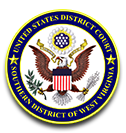Custody and Disposition of Exhibits
- During Trial or Hearing.
- Custody of the Clerk. Unless the court otherwise orders, all marked and identified exhibits of a documentary nature that are admitted into evidence during trial or hearing, and that are suitable for filing and transmission to the court of appeals as a part of the record on appeal, must be placed in the custody of the clerk of court.
- Custody of the Parties. Unless the court otherwise orders, all marked and identified exhibits, models and materials of unusual bulk or weight admitted into evidence during trial that cannot be conveniently stored in the clerk's facilities will be retained in the custody of the party offering them. The party will execute a receipt for the exhibits and will grant the reasonable request of any party to examine or reproduce the exhibit for use in the proceeding. With approval of the court, photographs may be substituted for said exhibits once they have been introduced into evidence.
- Custody of the United States Marshal. Unless the court otherwise orders, all marked and identified exhibits admitted into evidence that are sensitive in nature will be retained in the custody of the United States Marshal, who shall execute a receipt therefor. Such exhibits will include, but not be limited to, the following types of sensitive exhibits or evidence: controlled substances, firearms, ammunition, explosive devices, pornographic materials, jewelry, poisonous or dangerous chemicals, intoxicating liquors, money or articles of high monetary value, and counterfeit money. With approval of the court, photographs may be substituted for said exhibits once they have been introduced into evidence.
- After Trial or Hearing.
- Custody of the Clerk.Where the clerk of court does take custody of exhibits that are documentary in nature under subsection 55.1.a.1 of this rule, such exhibits may not be taken from the custody of the clerk until final disposition of the matter, except upon order of the court and execution of a receipt that identifies the exhibits taken, which receipt will be filed in the case. Copies approved by counsel and unrepresented parties must be filed in place of the original exhibits.
After final judgment and one year after the time for motion for new trial and appeal has passed, or upon the filing of a stipulation waiving and abandoning the right to appeal and to move for a new trial, the clerk is authorized, without further court order, to return all exhibits to the parties or their counsel.
- Custody of the Parties. Unless the court orders otherwise, the party offering exhibits of the kind described in subsection 55.1.a.2 of this rule will retain custody of them and be responsible for preserving them in their condition as of the time admitted.
- Custody of the United States Marshal. Where the United States Marshal does take custody of exhibits under subsection 55.1.a.3 of this rule, such exhibits will be returned to the offering party following the trial or hearing for preservation in their condition as of the time admitted.
- Retention of and Access to Exhibits by the Parties. Upon reasonable request, parties are to make available any and all exhibits in their custody for use by this court or by any appellate court for a period of two years after the conclusion of the case and any direct appeal For the purpose of this rule, the "conclusion of the case and any direct appeal" refers to the time when a conviction becomes final for the purposes of 28 U.S.C. § 2255.
- Custody of the Clerk.Where the clerk of court does take custody of exhibits that are documentary in nature under subsection 55.1.a.1 of this rule, such exhibits may not be taken from the custody of the clerk until final disposition of the matter, except upon order of the court and execution of a receipt that identifies the exhibits taken, which receipt will be filed in the case. Copies approved by counsel and unrepresented parties must be filed in place of the original exhibits.
- Alternative Procedures for Custody and Disposition of Exhibits.
In its discretion, on a case-by-case basis, the court may provide the Clerk with alternative procedures for custody and instruction for disposition of specific exhibits.
